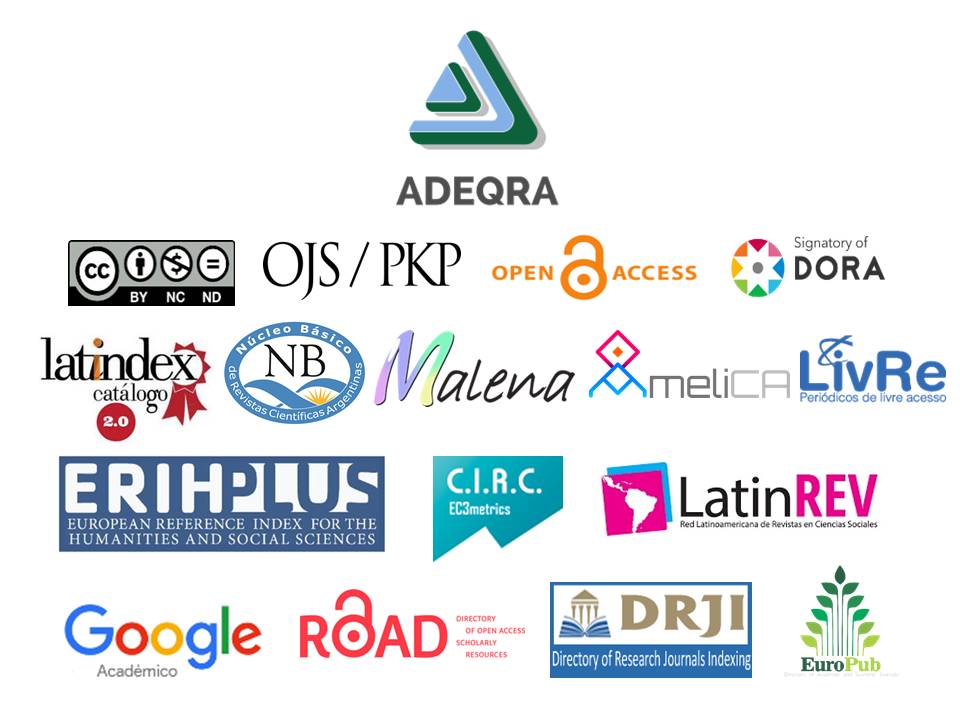Liquids and solutions: computer accessories for a General Chemistry course
Keywords:
simulations, general chemistry, liquids and solutionsAbstract
The learning of liquids and solutions presents difficulties in beginning students of introductory chemistry courses. The utility of simulations to overcome partially these difficulties in the teaching and learning process are discussed and various simulation programs on the subject developed by the author are described. Programs can be used as complementary laboratory classes, problems and theory activities. They are described in detail two of them, to view the scope thereof. Installables copy of some of the programs, with guides, are available without charge to interested readers.
References
Babor, J.A. y J. Ibarz Aznárez. (1968). Química general moderna. (p.393). Barcelona: Marin.
Baggio, S. (2009). Simulaciones en un curso de química básica, como complemento de las actividades de aula y laboratorio, con un enfoque de investigación guiada. Educación en la Química, 15, 1, 41-53.
Baggio, S. (2010). Las simulaciones como una forma de efectivizar la unidad teórico-práctica en un curso de química general: ejemplificación en el caso particular del tema gases. Educación en la Química, 16, 2, 109-120.
Baggio, S. (2018). Las simulaciones como un elemento integrador en cursos de química básica, Taller de 30 hs en la Universidad Nacional de Salta. Salta. Argentina, 2016, Simulaciones computacionales como estrategia para la enseñanza de la química, Taller de 24 hs en la Universidad Austral de Chile. Valdivia, Chile, 2018, El Rol de los juegos en el aprendizaje de la química: Uso de herramientas informáticas para su implementación, REQ XVIII, Universidad Nacional del Rio IV, Rio IV, Córdoba, Agosto 2018.
Barke, H.D., Hazari, A. y S. Yibarek. (2009). Misconceptions in chemistry: Addressing perceptions in chemical education; Berlín: Springer.
Blaedel, W.J. y V.W. Meloche. (1963). Elementary quantitative analysis: theory and practice 2nd Ed. (pp.510-518). New York; Harker y Row, Publishers
Bodner, G.M. (1986).Constructivism: A theory of knowledge. Journal of Chemical Education, 63, 10, 837–878.
de Jong, T. (2011). Instruction based on computer simulations. En Mayer, R.E. y P.A. Alexander (Eds.), Handbook on Research on Learning and Instruction (pp.446−466). New York: Routledge.
Gabel, D. (1999). Improving teaching and learning through chemistry education research: A look to the future. Journal of Chemical Education, 76, 4, 548–554.
Gabel, D. (2005). Enhancing students’ conceptual understanding of chemistry through integrating the macroscopic, particle, and symbolic representations of matter. En Pienta, N.J., Cooper, M.M. y T.J.
Greenbowe (Eds), Chemists’ guide to effective teaching, Vol. I. (pp77-88). Upper Saddle River, NJ: Prentice Hall Series in Educational Innovation; Prentice Hall.
Gilbert, J.K. y D. Treagust. (2009). Multiple representations in chemical education, Dordrecht: Springer-Verlag.
Haláková, Z. y M. Proksˇa. (2007). Two kinds of conceptual problems in chemistry teaching. Journal of Chemical Education, 84, 1, 172-174.
Herron, J.D. (1975). Piaget for chemists. Explaining what “good” students cannot understand. Journal of Chemical Education, 52, 3, 146–150.
Herron, J.D. y S.C. Nurrenbern. (1999). Chemical education research: Improving chemistry learning. Journal of Chemical Education,76, 10, 1353–1361.
Johnstone, A. H. (2006). Chemical education research in Glasgow in perspective . Chemistry Education Research And Practice, 7, 2, 49–63.
Johnstone, A.H. (2010). You can’t get there from here. Journal of Chemical Education, 87, 1, 22–29.
Kirschner, P.A., Sweller, J., y R.E. Clark. (2006). Why minimally guided instruction does not work. Educational Psychologist, 41, 2, 75–86.
Mahan, B.M. y R.J. Myers. (1987). University chemistry.4th Ed. (pp.142-145). California: The Benjamin/Cummings Publishing Co, Inc.
Mayer, R.E. (2009). Multimedia learning (2nd Ed.). New York: Cambridge University Press.
Palmer, W.G. (1966). Química física experimental (pp.65-73), Buenos Aires: Eudeba.
Papert, S. (1980). Mindstorms: Children, computers, and powerful ideas. New York: Basic Books.
Partington, J.R. (1950). Química general e inorgánica (p.101), Madrid: Dossat.
Renner, J.W. (1984). Two theories of learning: In one we believe, the other we use. ChemTech, August, 462-467.
Rieber, L.P. (2005). Multimedia learning in games, simulations, and microworlds. En: Mayer, R.E. (Ed), The Cambridge Handbook of Multimedia Learning (pp.549-567). New York: Cambridge University Press.
Robinson, W.R. y S.C. Nurrenbern. (2006). Conceptual Questions (CQs). En: http://jchemed.chem.wisc.edu/JCEWWW/Features/CQandChP/CQs/CQIntro.html.
Taber, K. (2002). Chemical misconceptions: Prevention, diagnosis, and cure, Vol.I, London: Royal Society of Chemistry.
Talanquer, V. (2011). Macro, submicro, and symbolic: The many faces of the chemistry “triplet”. International Journal of Science Education, 33, 2, 179–195.
Tobias, S., y T.M. Duffy (Eds.). (2009). Constructivist instruction. Success or failure? New York: Routledge.
Weaver, G.C. (2009). Teaching to achieve conceptual change. En: Pienta, N.J., Cooper, M.M. y T.J. Greenbowe (Eds), Chemists’ guide to effective teaching, Vol. II (pp.35−48), Upper: Prentice Hall Series in Educational Innovation. Saddle River, NJ.
Downloads
Published
How to Cite
Issue
Section
License

This work is licensed under a Creative Commons Attribution-NonCommercial-NoDerivatives 4.0 International License.



